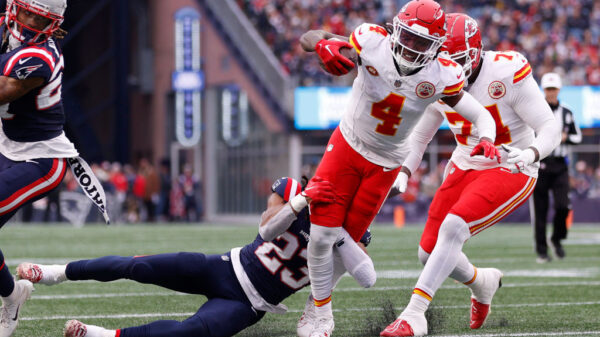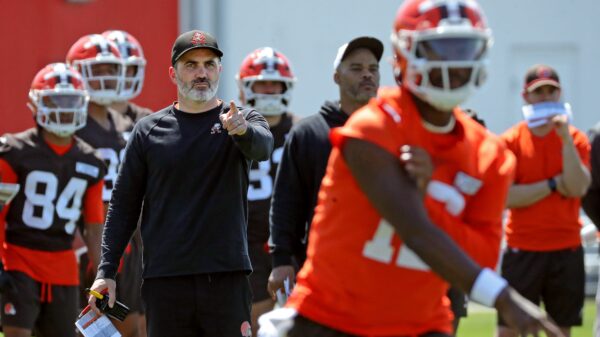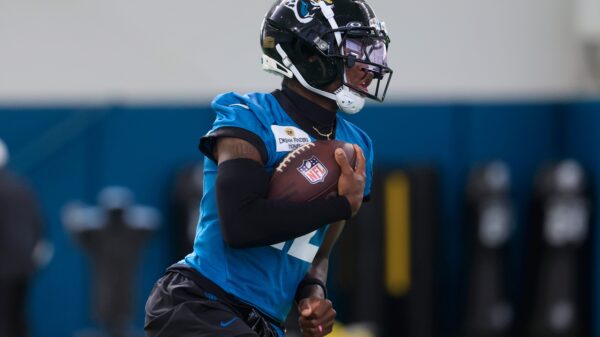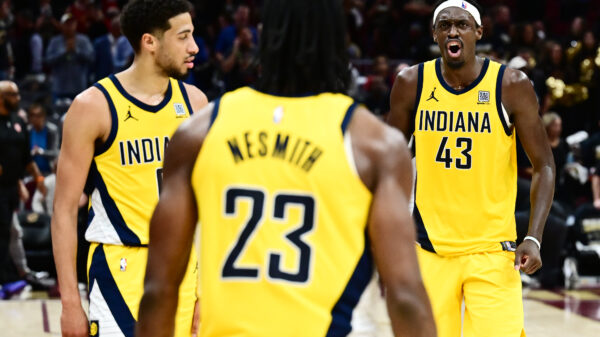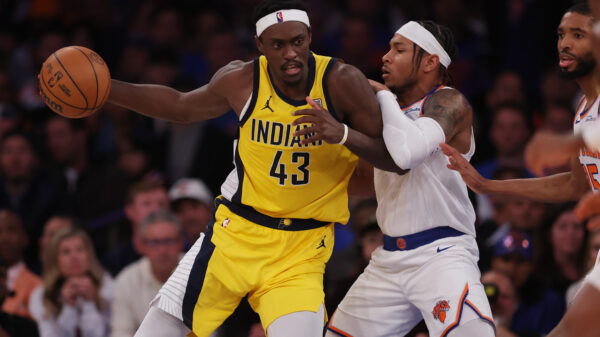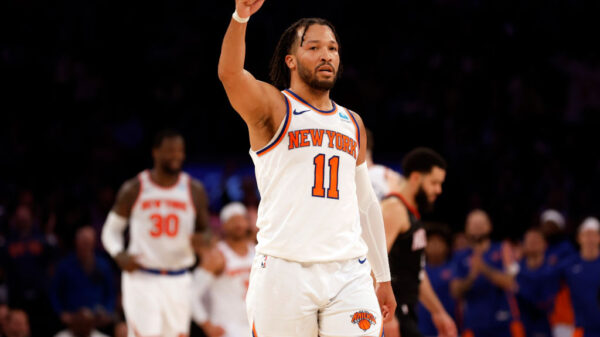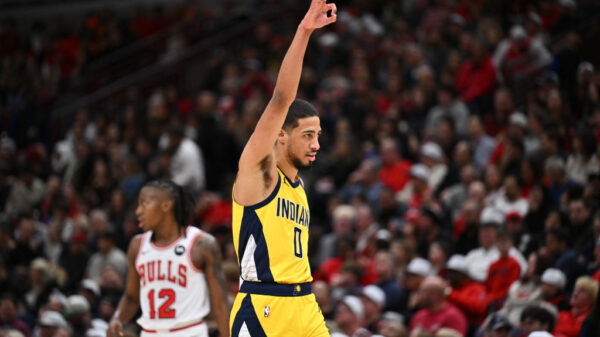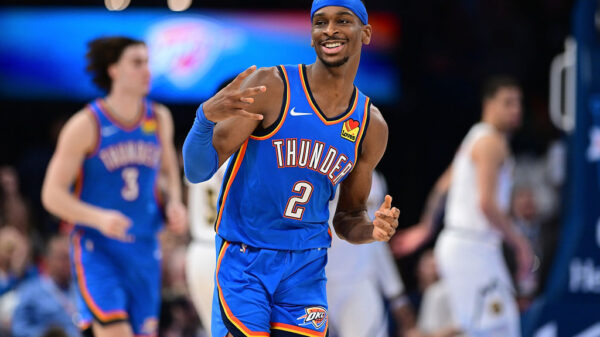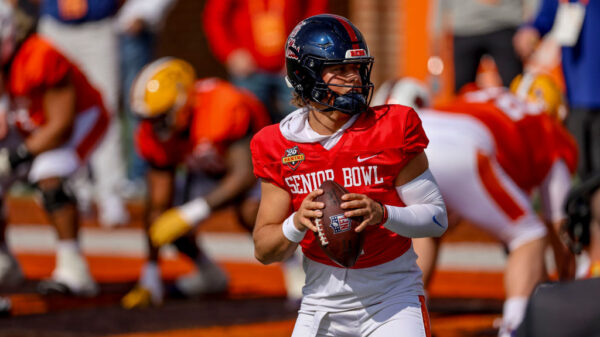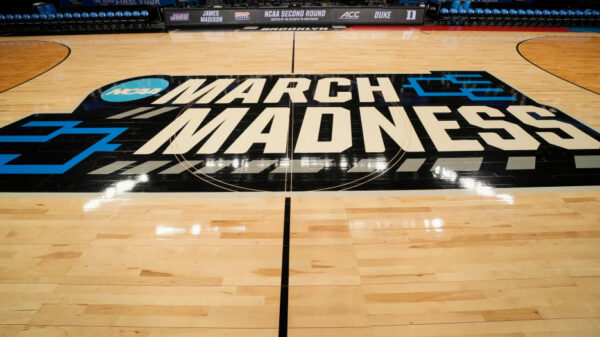Warning: I’m very high on the Colts’ offense heading into 2024. I’m even going to be high on players in this article who aren’t Colts anymore. So, if you’re already in on the team from Indianapolis, read on for some of that sweet, sweet confirmation bias. If not, hopefully I can change your mind. Let’s go!
Ground Rules: Check out the first edition here for a full explanation of what’s going on. All scoring is Half-PPR, Week 18 stats are not included (so a full season is 16 games), and only players currently being drafted in the top 200 of Underdog Best Ball drafts are covered.
Quarterback
Anthony Richardson
The Box Scores
- Total Points: 73.7; QB37
- Games Played: 4
- Points Per Game: 18.4; QB13
Beyond The Box Scores
- Full Games Played: 2
- Points Per Full Game: 25.8; QB1
Honestly, the main reason I’m high on Richardson is that simple stat right there ↑. Yes, two games is a small sample size. But it’s hard to look past that, when he was healthy, Richardson averaged 1.6 more points per game than Josh Allen … who was over two points clear of any other quarterback. Richardson also laps the field if we look at fantasy points per dropback, with his 0.76 well ahead of Allen in second (that Josh Allen guy might be pretty good) at 0.64. Even if we switch to fantasy points per opportunity to account for Richardson’s designed runs, his 0.64 is still an outlier ahead of No. 2 Brock Purdy at 0.6. Of course, those designed runs are why Richardson is so valuable for fantasy: Among QBs with at least 100 snaps, Richardson ranked second (to Sam Darnold, whose number is literally 100% QB sneaks) with a 10.4% designed rush rate. For context, here are where some notable dual-threat QBs landed: Jalen Hurts — 10.1%, Justin Fields — 9.9%, Lamar Jackson — 8.2%, Josh Allen — 5.4%. If we look just at runs PFF designated as having either man or zone blocking schemes (to roughly filter out QB sneaks), Richardson stands alone at the top with a 7.5% rate — Fields at 6.6% and Lamar at 5.9% are the only other QBs above 5%.
Of course, passing matters too for quarterbacks, and Richardson was less impressive on that front in his brief rookie season. Among 49 quarterbacks with at least as many as his 98 dropbacks, he ranked 25th in yards per attempt and 40th in adjusted completion percentage and had the 18th-highest Turnover Worthy Play rate. He also posted a very high 22.6% pressure-to-sack rate and finished with a concerningly low 56.5 PFF Passing Grade, landing him right below Zach Wilson.
Takeaway
Here’s the thing: On some level, nothing I said in that second paragraph matters for 2024 fantasy football. Because even with those concerning passing numbers, Richardson was an ELITE fantasy producer as a rookie. The real concern with a few of those metrics is that he will lose his starting job, but the Colts aren’t going to bench the fourth-overall pick in his second season in the league, so we don’t have to worry about that in Redraft leagues. Even if Richardson, who turns 22 in May, doesn’t take a step forward as a passer, he can have a Justin Fields-esque season where he puts up elite fantasy numbers without necessarily playing great NFL football. If he does take a step forward, his ceiling is a game-breaking season along the lines of Lamar Jackson’s 2019. With that in mind, Richardson’s QB6 ADP is a screaming bargain. At the very least, he should be going as the QB4 behind the big three of Allen, Hurts, and Jackson … and I might be tempted to take him above the latter two of those names. It’s valid to be concerned about the sustainability of Richardson’s playstyle and rushing volume, as he did get hurt twice in four games as a rookie. But I’m not a big fan of avoiding players because they are “injury-prone,” and I’m certainly willing to take that risk at the end of the fifth round on a potentially league-winning player.
Running Back
Jonathan Taylor
The Box Scores
- Total Points: 120.3; RB35
- Games Played: 9
- Points Per Game: 13.4; RB14
Beyond The Box Scores
- Full Games Played: 5
- Points Per Full Game Played: 15.2; RB5
The RB1 overall in 2021 had a wild ride in 2023. We probably all remember his holdout/trade demand over the offseason, which then morphed into an ankle injury that kept him out until Week 5 of the season. But looking back through my in-season writeups on his situation, JT had plenty of other bumps along the road as well. The Colts worked him back in slowly (in a committee with Zack Moss) until he finally took over in his fourth week back … for one half, before coming up limping late in the second quarter and only touching the ball twice the rest of the way. His usage bounced back to elite status the next week … just in time for him to injure his thumb in the week after that, earning a fresh three-week trip to IR. When he returned, Moss was injured, so he finished the season trending upwards with RB22, RB12, and RB3 finishes in Weeks 16, 17, and 18 respectively.
Perhaps not surprisingly given the up-and-down nature of his season, Taylor’s efficiency metrics took a step back in 2023. He ranked 29th of 49 qualified backs in PFF Rush Grade, 16th in yards created, and 15th in yards over expected per carry. Those are still solid numbers, but worse than his marks in 2022 (where he also dealt with multiple injuries) and well below his incredible 2021 metrics. On the bright side, new Colts Head Coach Shane Steichen was creative with Taylor in the passing game: JT lined up in the slot for 5.7% of his routes and out wide for 12.7%, both easily career highs (the second number more than triples his previous high). This didn’t result in much increased receiving production, as Taylor’s yards per route run was still an uninspiring 0.86, but it’s an intriguing trend.
Takeaway
Taylor’s 2023 is as much about what we didn’t get to see as what we did. I’m not convinced we ever saw him fully healthy and being utilized as Steichen planned. We also never really saw him play with his new franchise quarterback, as he and Richardson never played over 35% of snaps in the same game. Will AR’s return benefit Taylor by opening up running lanes, or will the raw QB steal goal-line TDs and scramble instead of checking down? Is the 25-year-old still an elite back when healthy, or are his good-not-great 2023 efficiency numbers just who he is now? And can he even stay healthy for a full season? It’s impressive that Taylor is being drafted as the RB7 with that many lingering questions. But, especially with Moss gone to Cincinnati, JT is a near-lock to see 70%+ of his team’s RB carries, something that can only be said about a handful of backs. With that in mind, Taylor will probably end up a slot or two above RB7 in my personal rankings, and he’s a very solid pick as a backend RB1, with upside if he returns to his 2021 form.
Zack Moss
The Box Scores
- Total Points: 153.1; RB27
- Games Played: 13
- Points Per Game: 11.8; RB22
Beyond The Box Scores
- Games Over 40% Snap Share: 9
- Points Per Game Over 40% Snap Share: 14.0; RB11
In case it wasn’t made clear by the previous blurb, Moss’ 2023 usage was determined primarily by Taylor’s health. He had some weeks of absurd usage with JT out, leading him to four top-10 weekly finishes in Weeks 2-6. But he was also cut out of the Colts’ offense nearly entirely when JT finally got healthy, falling into complete fantasy irrelevance. Luckily, Moss won’t be with the Colts in 2024, so we don’t have to worry about his 2023 usage too much. Looking at efficiency, Moss’ season was a mixed bag. Among 49 qualified RBs, he ranked fifth in Next Gen Stats’ rush yards over expected per carry (great), 21st in yards created per SumerSports (solid), and 34th in PFF Rush Grade (bad). Moss did set a career-high in receptions in his first full season with the Colts, but he did it on an abysmal 43.9 PFF Receiving Grade … and his new career-high was still just 27.
Takeaway
Moss signed with the Bengals this offseason, which is about as good a landing spot as he could have hoped for. With Joe Mixon gone, there is a lot of high-value usage up for grabs, and, as I discussed in the Bengals version of this article, I’m not sold on Chase Brown as a high-volume rusher. Admittedly, a lot of Mixon’s fantasy value came through the air, a role that is likely to go to Brown (or even a third committee member) before Moss, which caps the veteran’s upside. So while I think there is a decent chance Mixon is technically an RB2 by the end of the year, I’d rank him more as a high-end RB3 … which is still above his current RB33 ADP, where he’s a good depth RB pick.
Wide Receiver
Michael Pittman Jr.
The Box Scores
- Total Points: 190.8; WR16
- Games Played: 15
- Points Per Game: 12.7; WR17
Beyond The Box Scores
- Full Games Played: 14
- Points Per Full Game: 12.9; WR16
Despite missing essentially two full weeks due to injury, Pittman finished the season ranked ninth in both target share (29%) and total targets (156). He also ranked seventh overall in first-read/designed targets, including 24 targets on RPOs, easily the most of any player. But he wasn’t just a system player, as he ranked 22nd in the league in PFF Receiving Grade and 23rd in yards per route run. If we’re looking for downsides, Pittman mostly served as an intermediate and underneath weapon, with his 8.1 ADOT ranking 87th out of 102 qualified receivers. He also ranked fifth-lowest among all 36 100-target WRs in touchdown rate, with just 3.7% of his receptions going for TDs. This showed up on the fantasy scoreboard, as Pittman finished in the WR2 range for both total points and points per-game despite his top-10 target numbers.
Takeaway
Pittman seems obviously undervalued heading into 2024 as the WR21 in ADP. Perhaps the switch to an unproven NFL passer in Richardson is scaring people off, but the rookie outperformed Gardner Minshew in both EPA per dropback and adjusted yards per attempt in 2023. He should, at the very least, keep Indianapolis’ offense at a similar level of efficiency. And Pittman was a top-20 receiver in this offense last year despite some bad touchdown luck. If he sees positive regression or Richardson takes a step forward, he could easily finish as a top-12 receiver. Even if not, it’s very hard to argue against a guy who was top 10 in the league in targets last year, is in essentially the same situation this year, and is being drafted outside of the top 20 receivers.
Josh Downs
The Box Scores
- Total Points: 116.8; WR45
- Games Played: 16
- Points Per Game: 7.3; WR54
Beyond The Box Scores
- Full Games Played: 14
- Points Per Full Game: 7.9; WR53
There is no denying that the third-rounder out of North Carolina had an excellent rookie season, establishing himself as a starter and effective receiver for the Colts. But he wasn’t actually all that impactful as a fantasy option. Downs had just two weekly finishes inside the top-20 receivers and only four games above 10 Half-PPR points. And all of those games came early in the season: He didn’t score double-digit points or finish in the top 45 weekly receivers a single time in the Colts’ final nine games (Week 18 included). In Downs’ defense, that drop in his fantasy production exactly coincides with his suffering a knee injury, and he was severely limited in a couple of those nine games. Prior to the injury, his PFF Receiving Grade (74.9) and yards per route run (1.79) were both solidly above average. Those numbers fell to 62.3 and 1.36, both below-average marks, over the final nine games, so his final season marks are mediocre. With that said, it’s a little hard to believe that Downs’ decreased efficiency and production in the back half of the season was entirely due to his injury when he didn’t even miss one game, but I’ll leave it as an exercise for the reader to decide how heavily to weigh those splits.
Putting aside his actual production, there is still one big red flag with Downs’ fantasy profile as a rookie: How he was used by the Colts. Among WRs with at least 35 targets, only Tyler Boyd and Hunter Renfrow ran a higher percentage of their routes out of the slot than Downs’ 81.3%. To his credit, Downs did post a solid 2.01 yards per route run on his 88 routes run from outside the slot. Meanwhile, Alec Pierce, who played the majority of the Colts’ outside reps instead of Downs, was at a putrid 0.98. But at 5’7″ and 171 pounds with outlier-level short arms, it’s not hard to see why the Colts don’t want Downs playing every-down reps outside, where he would be forced to run-block and beat press coverage. Luckily for Downs, the Colts did rank fifth in the league in terms of the number of their passing plays that came out of sets with at least three WRs on the field, but that number was still just 81.5%, and Downs ran just eight routes in two or one-WR formations. Forfeiting nearly 20% of your potential routes by default is not good, to say the least.
Takeaway
In case you couldn’t tell, I’m not feeling great about Downs’ fantasy prospects. Even if we assume he can return to the efficiency he had in the first half of his rookie season, his ceiling will always be capped unless he can earn snaps in two-WR sets, which seems unlikely. At WR53 in ADP, you’re not drafting him to be a starter except in very deep leagues, so I’d rather shoot for upside with players who could see full-time roles.


